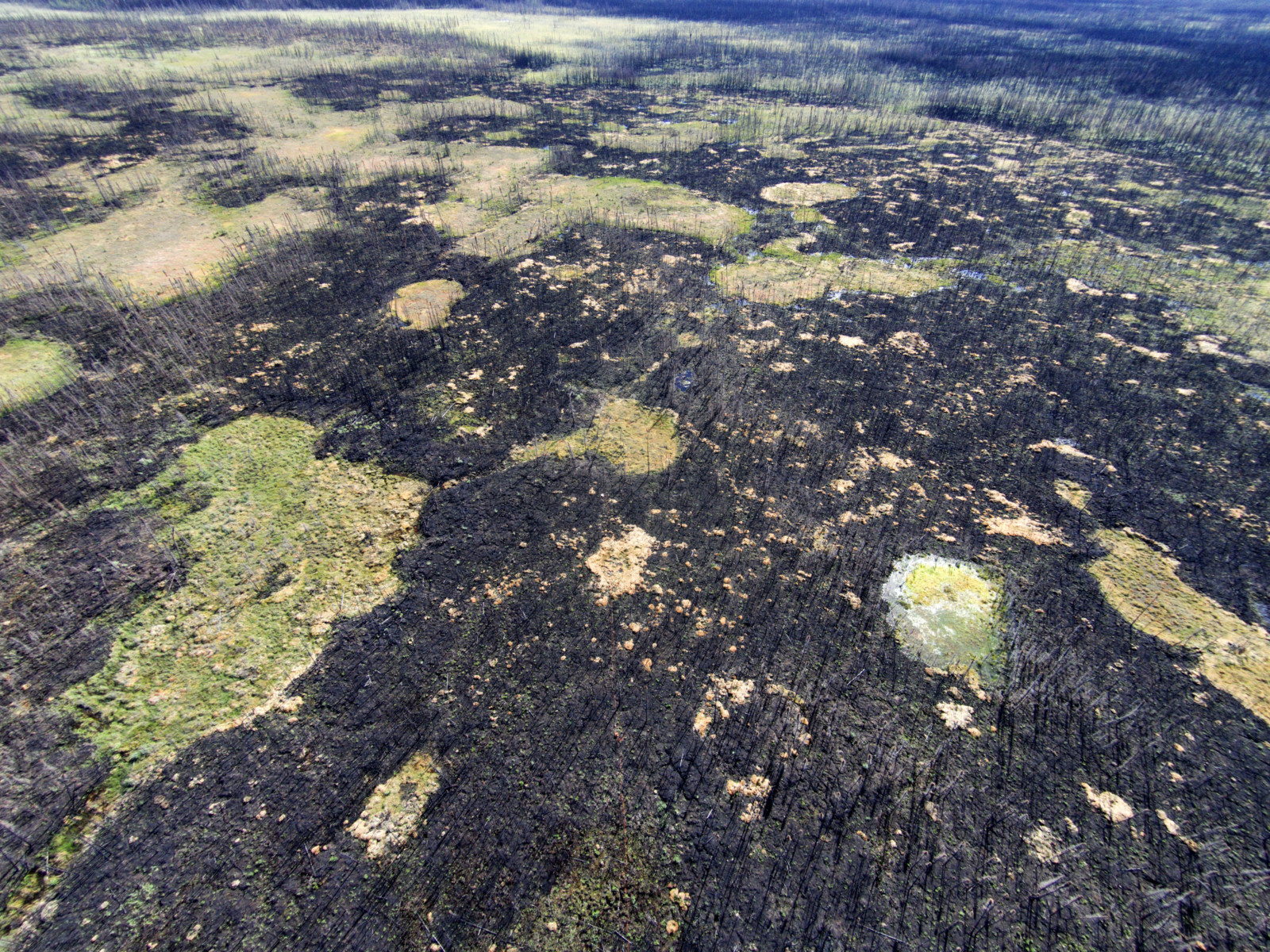
Fig 1: A permafrost peatland in the Northwest Territories, Canada, which was burned in 2014. Peatlands are complex, and we are just starting to understand how northern peatlands respond to fire. This picture was taken in 2015, and shows regions which remain charred a year after the fire, with the green areas representing bogs which were too wet to burn. 2014 was a record breaking year, where a total of 3.4 million hectares burned in the region! Similar large fire years have been seen in other areas of Canada, Alaska, Russia, and China in the last few decades. [Credit: Jean Holloway]
What is permafrost anyway?
- Permafrost is ground that is frozen for two or more consecutive years, and it typically forms in any climate where the mean annual air temperature is less than 0°C.
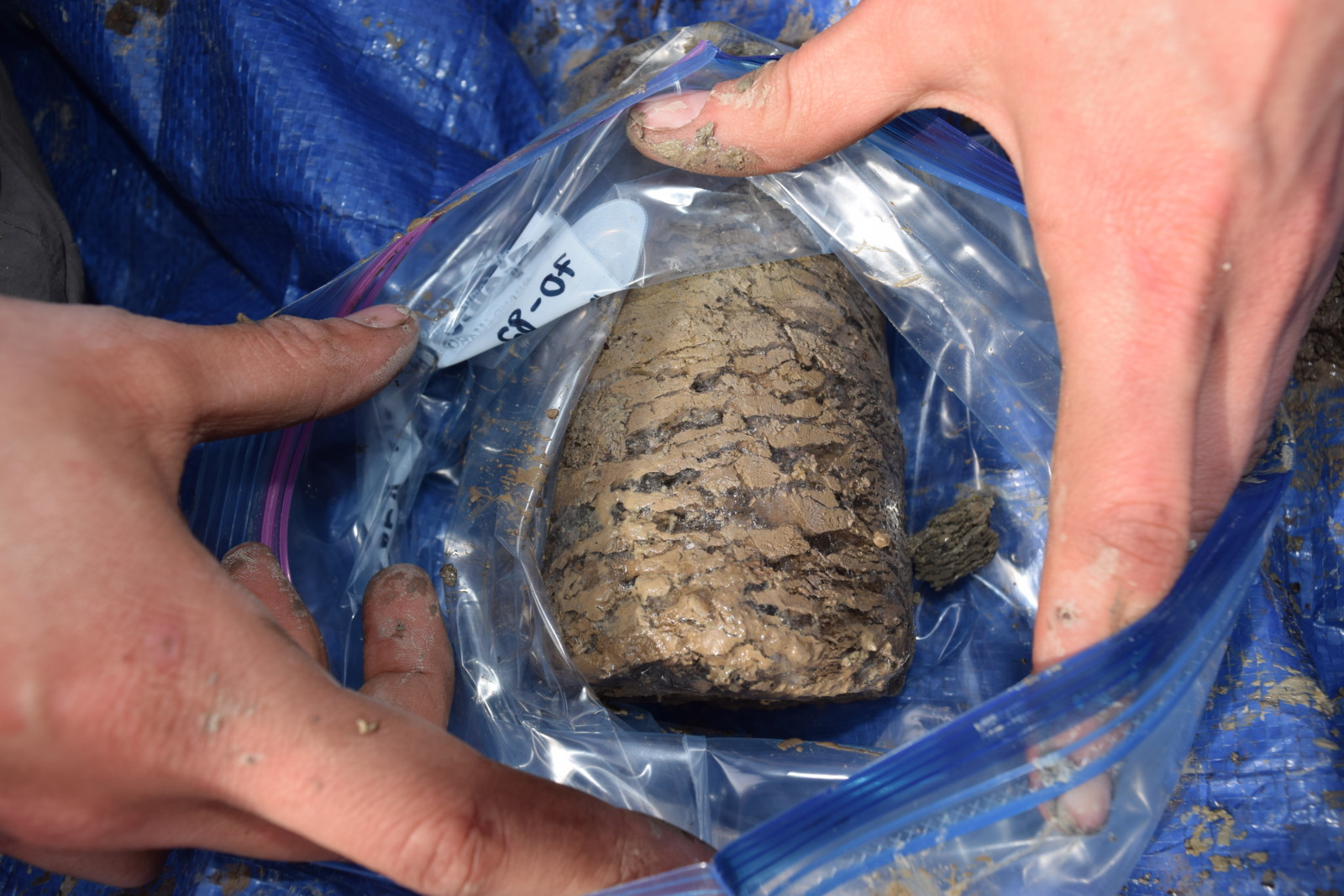
Fig 2: Permafrost is a mixture of ice, soil and rocks. This is a core of particularly ice-rich permafrost. [Credit: Jean Holloway]
Nerdy terminology break: when you talk about permafrost, it THAWS, it does not MELT. Melting implies phase change from solid to liquid. Permafrost isn’t just made up of ice, it also has soil and rock, which don’t melt when they go above 0°C (Fig 2). When you take a turkey breast out of the freezer it doesn’t turn into a puddle of chicken goo – it thaws! Here is a cool blog post about this issue.
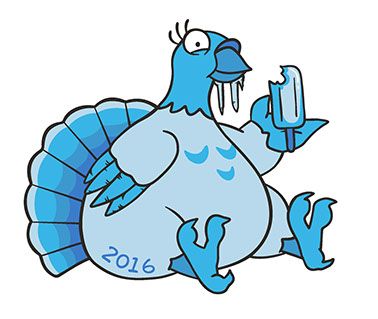
Why the heck should you care about permafrost and fire?
There are three main reasons why we as a society should care about the impacts of fire on permafrost, and permafrost degradation in general. I will go into greater detail in the upcoming sections, but the take home messages are:
- Thawing permafrost causes ground settlement which affects local infrastructure.
- Post-fire changes to biogeochemistry can alter downstream water quality, which is important for local communities.
- Thawing permafrost releases more carbon into the atmosphere, triggering a positive-feedback loop and accelerating global climate change.
Now that I have your attention, let’s learn about some fire and ice!
How does permafrost respond to fire?
Wildfire is a natural and essential component of many permafrost landscapes, including boreal and subarctic forests, but also tundra regions. For some species in the boreal, such as black spruce (Picea mariana) and jack pine (Pinus banksiana), fire is essential because they need it in order to reproduce – they have what are called serotinous cones that open after fire and release their seeds! Fire has been a part of these permafrost landscapes for thousands of years. Changes occur immediately following the disturbance but mostly return to normal (pre-fire) levels after a few decades.
Permafrost is impacted when severe fires destroy the tree canopy and the surface organic layer (a thin layer of dead and decaying plant material, ranging from ~10-50 cm but can be much thicker!) that insulates the ground. Think of it like a blanket that keeps the heat in while you sleep, except the opposite – it keeps the ground cold. Permafrost LOVES the organic layer, because its thermal properties promote permafrost stability. For example, frozen peat has very high thermal conductivity (Fig 3). So, in the winter, it allows the cold air temperatures to penetrate deep into the ground. But… in the summer it is dries out and has low thermal conductivity, which means heat can’t get in. This helps the permafrost stay frozen!

Fig 3: Peat soil (left) and Sphagnum moss (right) favour permafrost presence due to unique thermal properties that help keep the ground cool. [Credit: Jean Holloway]
So, when fires destroy this layer it leaves the permafrost vulnerable to thaw. Further, fires destroy the tree canopy and other vegetation, which shade the ground and intercept the snow, both which protect the permafrost (Fig 4).

Fig 4: Snow trapped up in the tree canopy by coniferous trees at an unburned site near Yellowknife, Canada. This allows cold air to penetrate into the ground and protects the permafrost. [Credit: Jean Holloway]
Some other key factors that impact the permafrost following a fire include:
- Decreased albedo (albedo is how much a surface reflects sunlight – dark charred surfaces absorb a lot of heat and make the ground warmer)
- Changes in snow cover
- Alterations to the surface energy balance (basically, how much energy moves in and out of the ground) and micro-climate
- Reduction in evapotranspiration and changes in soil moisture (when there is vegetation present it moves water from the soil to the roots and up into the leaves, so when fire destroys the vegetation there is more water left in the ground)
In combination, these changes result in warmer and wetter soils, greater heat moving into the ground, and increased active layer thickness. The active layer is the top of the permafrost which freezes and thaws annually, and usually it is ~1 m deep. But after fire the active layer thickness can increase dramatically, sometimes to 3 m!
Fire changes the hydrology and biogeochemistry of permafrost landscapes
Fires can also have significant effects on the hydrology, biogeochemistry, and soil microbial communities of permafrost landscapes (for a good overview of this, check out: Tank et al., 2018). Fire changes the chemistry of the soil and water in streams and lakes. For example, we know that fire decreases soil acidity AND increases microbial activity (warmer soil temperatures after the fire = happy active microbes). Further, active layer thickening releases solutes, nutrients, and other things that were previously trapped in the frozen ground, allowing them to be transported by water. Sometimes, active layers get very thick and create thawed zones called taliks, which allow water to travel through the previously impermeable frozen ground year round! Studies have shown that aquatic ecosystems recover rapidly following fire but we don’t really know how climate warming and changing fire regimes will affect this in the future.
Lastly, fire changes the ecosystem carbon balance, because the increases in soil temperatures and active layer thickness that happen after fire make previously frozen organic matter available for decomposition by those happy microbes. The microbes eat the organic matter and release carbon into the atmosphere. This results in a positive feedback to climate change – fire thaws permafrost, releasing carbon into the atmosphere, leading to more climate change and warmer temperatures, which leads to more fire and more thawing permafrost, which releases more carbon… and so forth. This is not good! We need better regional sampling of permafrost carbon estimates to be able to predict how bad this is going to be in the future.
How does permafrost recover from fires?
In the past, permafrost in many places have been stable after fire, where changes occur immediately after fire, but return to pre-fire conditions in the next several decades (see, for example, this study: Rocha et al., 2012). This happens because the vegetation undergoes what is called succession, which basically means it regrows. So that organic layer and tree canopy which is so essential for permafrost returns to normal! Factors that determine how permafrost is impacted by fire and how it will recover include landscape position, soil type, organic layer thickness, burn severity, drainage and soil moisture conditions, snow, pre-fire permafrost and vegetation conditions – it’s complicated!! As an example, a poorly drained lowland site with a thick organic layer won’t be as vulnerable to fire as a dry high site with coarse soil.
Fire causes permafrost thaw and thermokarst development
It is important to mention that when ice-rich permafrost thaws following fire we can also get the development of what is called “thermokarst” (If you want to read more about this, see: Gibson et al., 2018). Thermokarst is pitted or irregular landscapes that are formed with ice-rich permafrost thaws and settles (Fig 5). These types of landscapes with thermokarst don’t follow the same post-fire recovery patterns, likely taking much longer to recover to pre-fire conditions (if at all… we don’t really know yet!). In addition, thermokarst changes drainage, can result in forest loss, and can impact infrastructure. We have seen this type of damage after fire (and also following general permafrost thaw) all around the globe: in Alaska, Canada, China, and Russia. In addition, thermokarst can also release large amounts of carbon. However, predictive models don’t take this into account yet – exciting research to expect here in the future!!

Fig 5: Thermokarst that developed after a wildfire at a permafrost site in the Northwest Territories, Canada. You can see the water pooling, which results in even further permafrost degradation. [Credit: Jean Holloway]
Fire, permafrost, and future climate change
So permafrost is impacted by fire, but usually it has been able to recover. HOWEVER, these patterns of permafrost recovery will likely be affected by changing fire regimes. In the Alaskan and Canadian boreal, we are currently seeing more fire than ever before (Here is one of many papers that shows this: Jain et al., 2018), particularly in the western provinces and territories. As global temperatures rise everything gets drier, and there is actually more lightening, which means larger and more severe fires. These fires typically result in more of the organic layer being removed, which leads to greater permafrost thaw. Predictive models indicate that fire in tandem with climate change, will accelerate the disappearance of permafrost. Some sites may still be able to recover, but greater warming results in longer recovery periods, if at all…
And the ability to recover might currently be overestimated: modelling suggests that permafrost in poorly drained landscapes with thick organic layers, such as peatlands, tundra, and other lowland systems, will likely be stable to fire over the long-term. BUT these landscapes are often impacted by thermokarst, and right now our models don’t have the capacity to incorporate the effects of thermokarst on the system. More work needs to be done to understand this!
Further Reading
 Jean Holloway is a PhD student at the University of Ottawa, in Ottawa, Canada. Her research interests surround the impacts of fire on discontinuous permafrost in the Northwest Territories, Canada. She uses a variety of techniques to investigate this, including monitoring ground temperatures, conducting annual geophysical surveys, and applying thermal modelling to predict future change. Contact e-mail: jean.holloway77@gmail.com
Jean Holloway is a PhD student at the University of Ottawa, in Ottawa, Canada. Her research interests surround the impacts of fire on discontinuous permafrost in the Northwest Territories, Canada. She uses a variety of techniques to investigate this, including monitoring ground temperatures, conducting annual geophysical surveys, and applying thermal modelling to predict future change. Contact e-mail: jean.holloway77@gmail.com

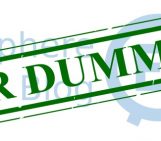
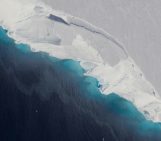
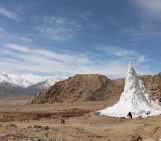
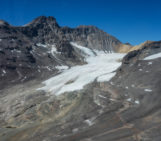
pit and pipe installations
Your blog post is so helpful and its so great post.. Thanks for sharing such this type information.,..